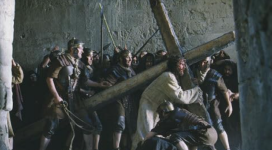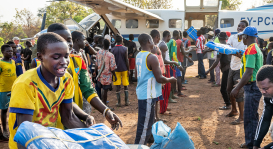Mexicans constitute the single largest immigrant population in the United States and evangelical churches often play a significant role in settling the more than 11 million migrants into U.S. localities, according to a new study by the Woodrow Wilson Center's Mexico Institute.
The latest study, "Invisible No More: Mexican Migrant Civic Participation in the United States," explores the broad new upsurge in Latino immigrant participation in American civic and political life which emerged prominently in spring 2006. It found that Latinos – which has become an increasingly acceptable U.S. label for the Mexicans, Salvadorans, Guatemalans or Dominicans – have always been active in public life, rejecting the notion that the migrants are disengaged.
And churches have served both as a major bridge for their integration and platform for civic engagement.
"The church is converted into a space for collective action for organization and civic action," says Liliana Rivera Sanchez of the National Autonomous University of Mexico in the study. "The church becomes a social community ... where migrants recognize each other as believers and this allows them to reaffirm their belonging to a community outside of their local groups, and it creates ethnic reaffirmation of identity in the context of the United States."
"There is a tendency for religious identities, beliefs and practices to take on added meaning in the global context of accelerated migration," she adds.
The bridge-playing role of both Catholic and Protestant churches comes largely because they are simultaneously rooted in local communities and nested within a larger international community of believers. These religious centers provide migrants a space for religious worship and for collective action.
Churches are not the only local organization through which Latino migrants have been able to integrate themselves into the United States. Schools, unions, civil rights organizations and other U.S. institutions have also served the same purpose. According to the study, however, Latinos are mostly involved in churches. Research shows that 38 percent of native born Latinos said they volunteered their time to a church or religious group, 31 percent to a school, and 31 percent to a neighborhood, business or community group in the past year.
The study noted another major trend. Although nearly three-quarters of Latino migrants identify themselves as Catholics, Protestant churches are also increasingly important for Mexican migrants. Almost a quarter of Latinos now identify themselves as Protestants, according to Michael Jones-Correa of Cornell University, who the report cites. Additionally, more migrants have joined Protestant churches after arriving in the United States.
Churches have increased outreaches to the Latin American community and also supported migrants' agendas for civic and political engagement.
The New York Hispanic Clergy Organization, among many other religious groups, helped organize one of the many immigrant rallies that the nation saw in recent months. With turnouts reaching 700,000 people, marches including the Apr. 10 event for immigrant justice and May 1 rallies pressuring Congress made Latino migrants more visible in such issues than ever before.
"Religious communities, both Catholic and Protestant, have played a particularly important role in creating channels for migrants to become engaged with issues in their U.S. communities," concludes the study. "These communities appropriate symbols and patterns of worship from migrants’ hometowns in Mexico but tie worship to the issues that migrants face in the United States and build capacities to address these proactively."
The study was released Aug. 17 by the Washington-based Wilson Center, a nonpartisan think tank, and is based on research papers presented at a conference held in November 2005.







